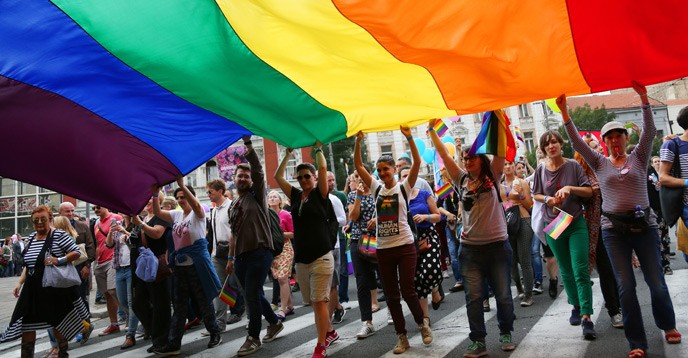SCHOOLS FACE OF HOMOPHOBIC & TRANSPHOBIC
In some countries, 85 per cent of lesbian, gay, bisexual and transgender (LGBT) students experience homophobic and transphobic violence in school, 45 per cent of transgender students drop out. Homophobic violence also targets 33 per cent of students who are wrongly perceived to be LGBT because they do not appear to conform to gender norms. These are the findings from Out In The Open, a global report on education sector responses to violence based on sexual orientation and gender identity or expression. Compiled by UNESCO for the International Day of Action Against Homophobia, Transphobia and Biphobia (IDAHOT), the report reveals the nature, scope and impact of the violence, the status of education sector responses and recommendations for the way forward.

Author: UNESCO
Photo: www.unesco.org
In some countries, 85 per cent of lesbian, gay, bisexual and transgender (LGBT) students experience homophobic and transphobic violence in school, 45 per cent of transgender students drop out. Homophobic violence also targets 33 per cent of students who are wrongly perceived to be LGBT because they do not appear to conform to gender norms. These are the findings from Out In The Open, a global report on education sector responses to violence based on sexual orientation and gender identity or expression. Compiled by UNESCO for the International Day of Action Against Homophobia, Transphobia and Biphobia (IDAHOT), the report reveals the nature, scope and impact of the violence, the status of education sector responses and recommendations for the way forward.
The report was released at an international education Ministers meeting hosted by UNESCO in Paris on 17 and 18 May, the largest gathering at such a high level to tackle homophobic and transphobic violence in education. The Ministers are expected to release a Call for Action to affirm their commitment to ensure the right to quality education for all students.
“In 2015, at the United Nations Sustainable Development Summit, world leaders made a promise to deliver inclusive, equitable and quality education for all, and ensure healthy lives and promote well-being for all by 2030,” recalled Irina Bokova, Director General of UNESCO. “UNESCO recognizes however, that no country can achieve this goal while students are being discriminated against or experience violence, including bullying, because of their actual or perceived sexual orientation or gender identity,” she added.
This report provides the first ever global synthesis of data on violence based on sexual orientation and gender identity or expression in educational settings, and existing responses by education sectors across regions. While data is not available for all countries, the Report found that homophobic and transphobic violence has a significant impact on students’ education, employment prospects, health and well-being.
In China, 59 per cent of LGBT respondents to a survey said bullying had negatively affected their academic performance, while in Australia there was a high correlation between victimization and lack of concentration in class, lower marks, and attendance for transgender youth.
Homophobic and transphobic violence is also associated with poorer than average physical and mental health, including increased risk of anxiety, fear, depression, self-harm and suicide. Studies from Belgium the Netherlands, Poland, and the United States, suggest that LGBT students and young people are twice and five times more likely to consider or attempt suicide than their heterosexual peers.
UNESCO recommends that the response by the education sector should be rights-based, learner-centred and inclusive, participatory, gender responsive and transformative, evidence-based, age-appropriate, and context specific and culturally sensitive.
Ministers from several countries will join leaders from civil society and multilateral agencies on 18 May to issue a Call for Action to address the school-related homophobic and transphobic violence revealed in this report. It will be the first such call to be issued by decision-makers at this level.




